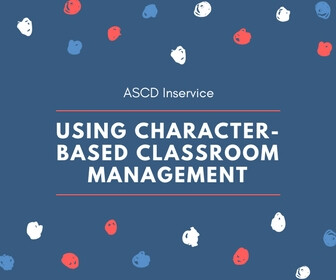It’s wonderful to see all the protests around the country against standardized testing. At Garfield High School in Seattle, Washington, teachers are refusing to administer the Measures of Academic Progress (MAP). In Texas, hundreds of school districts have passed a resolution saying standardized tests are ”strangling” public schools. The National Resolution on High Stakes Testing, which calls on government officials to reduce standardized testing in our schools, has been endorsed by hundreds of organizations, and over 13,000 individuals. And yet, in spite of all this, standardized testing still is putting a wicked half-Nelson on our students’ curiosity, creativity, and passion for learning in tens of thousands of classrooms around the country.
Just in case you are in a position as an educator to influence public policy on this issue, here is a list of 15 reasons why standardized tests are problematic.
Why Standardized Tests Are Problematic
1. Because students know that test scores may affect their future lives, they do whatever they can to pass them, including cheating and taking performance drugs (e.g. psychostimulants like Ritalin “borrowed” from their friends).
2. Because teachers know that test scores may affect their salaries and job security, they also cheat (see the best-seller Freakonomics for some interesting statistics on this).
3. Standardized tests don’t provide any feedback on how to perform better. The results aren’t even given back to the teachers and students until months later, and there are no instructions provided by test companies on how to improve these test scores.
4. Standardized tests don’t value creativity. A student who writes a more creative answer in the margins of such a test, doesn’t realize that a human being won’t even see this creative response; that machines grade these tests, and a creative response that doesn’t follow the format is a wrong response.
5. Standardized tests don’t value diversity. There are a wide range of differences in the people who take standardized tests: they have different cultural backgrounds, different levels of proficiency in the English language, different learning and thinking styles, different family backgrounds, different past experiences. And yet the standardized test treats them as if they were all identical; identical to the group that took the test several years ago, and to which the test has been “normed” (e.g. this original group is the “norm group” against which any future test-takers are to be compared).
6. Standardized tests favor those who have socio-economic advantages. Test companies (a multi-billion dollar a year industry) not only manufacture the tests, they also manufacture the courses and programs that can be taken to “prepare for the test.” If you have the money, you can even get special tutors that will help you do well on a test. If you don’t have the money, and your school is in a low socio-economic area that gets less funding than rich suburban schools, then you’re not getting the same preparation for the test as those at the higher socio-economic levels do.
7. Because so much emphasis is placed on standardized test results these days, teachers are spending more and more time “teaching to the test.” If there is something that is interesting, compelling, useful, or otherwise favorable to the development of a student’s understanding of the world, but it is not going to be on the standardized test, then there really isn’t any incentive to cover this material. Instead, most of classroom time consists of either taking the tests or preparing for the tests, and this shuts out the possibility of learning anything new or important. For example, because the No Child Left Behind Law (NCLB) only tests reading, math, and science that means that art, social studies, physical education, history, and other subjects are given far less attention than used to be the case.
8. Standardized tests occur in an artificial learning environment: they’re timed, you can’t talk to a fellow student, you can’t ask questions, you can’t use references or learning devices, you can’t get up and move around. How often does the real world look like this? Prisons come to mind. And yet, even the most hard-headed conservative will say that education must prepare students for “the real world.” Clearly standardized testing doesn’t do this.
9. Standardized tests create stress. Some kids do well with a certain level of stress. Other students fold. So, again, there isn’t a level playing field. Brain research suggests that too much stress is psychologically and physically harmful. And when stress becomes overwhelming, the brain shifts into a “fight or flight” response, where it is impossible to engage in the higher-order thinking processes that are necessary to respond correctly to the standardized test questions.
10. Standardized tests reduce the richness of human experience and human learning to a number or set of numbers. This is dehumanizing. A student may have a deep knowledge of a particular subject, but receive no acknowledgement for it because his or her test score may have been low. If the student were able to draw a picture, lead a group discussion, or create a hands-on project, he/she could show that knowledge. But not in a standardized testing room. Tough luck.
11. Standardized tests weren’t developed by geniuses. They were developed by mediocre minds. One of the pioneers of standardized testing in this country, Lewis Terman, was a racist (the book to read is The Mismeasure of Man by Stephen Jay Gould). Another pioneer, Edward Thorndike, was a specialist in rats and mazes. Just the kind of mind you want your kid to have, right? Albert Einstein never created a standardized test (although he failed a number of them), and neither did any of the great thinkers of our age or any age. Standardized tests are usually developed by pedantic researchers with PhDs in educational testing or educational psychology. If that’s the kind of mind you want your child or student to have, then go for it!
12. Standardized tests provide parents and teachers with a false sense of security. If a student scores well on a test, then it is assumed that they know the material. However, this may not be true at all. The student may have simply memorized the fact or formula or trick necessary to do well on the test (some students are naturally gifted in taking standardized tests, others are not). A group of Harvard graduates were asked why it is colder in the winter and warmer in the summer. Most of them got the question wrong. They were good test-takers but didn’t understand fundamental principles that required a deeper comprehension (the book to read is The Disciplined Mind: Beyond Facts and Standardized Tests; the K-12 Education that Every Child Deserves by Harvard psychologist Howard Gardner, named in a poll as one of the 100 greatest public intellectuals in the world).
13. Standardized tests exist for administrative, political, and financial purposes, not for educational ones. Test companies make billions. Politicians get elected by promising better test results. Administrators get funding and avoid harsh penalties by boosting test scores. Everyone benefits except the children. For them, standardized testing is worthless and worse.
14. Standardized testing creates “winners” and losers.” The losers are those who get labeled as “my low students” “my learning disabled kids,” “my reluctant learners.” Even the winners are trapped by being caught up on a tread mill of achievement that they must stay on at all costs through at least sixteen years of schooling, and more often twenty years. The losers suffer loss of self-esteem, and the damage of “low expectations” (which research shows actually negatively influences performance – the book to read is Pygmalion in the Classroom: Teacher Expectation and Pupils’ Intellectual Development by Robert Rosenthal and Lenore Jacobson). The winners suffer loss of soul, since most of them are trained seals performing for fast-track parents and may reach midlife on a pinnacle of power and achievement, yet lack any connection to their deeper selves, to ethical principles, to aesthetic feelings, to spiritual aspirations, to compassion, creativity, and/or commitment to life.
15. Finally, my most important reason that standardized tests are problematic: During the time that a child is taking a test, he/she could be doing something far more valuable: actually learning something new and interesting!








